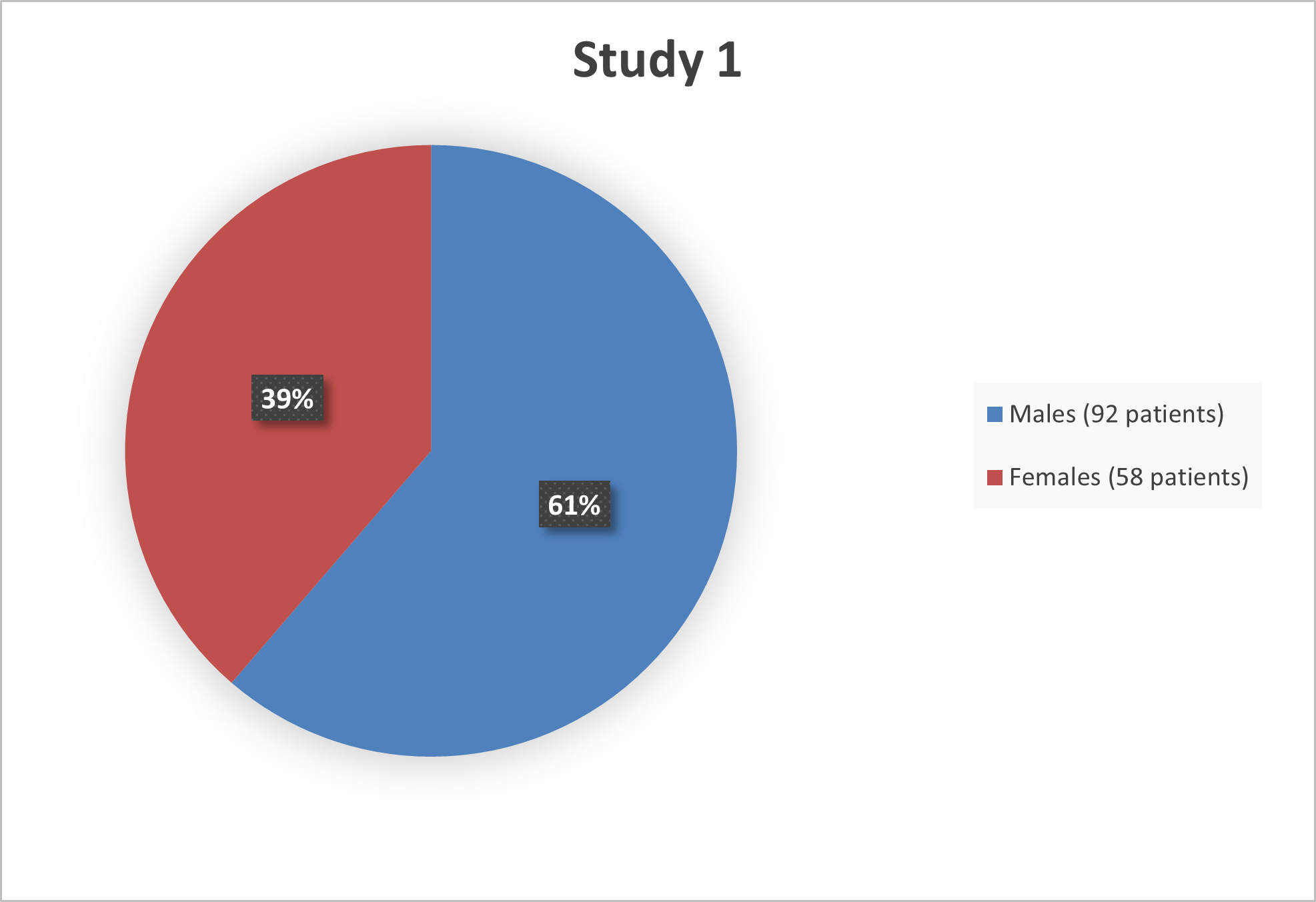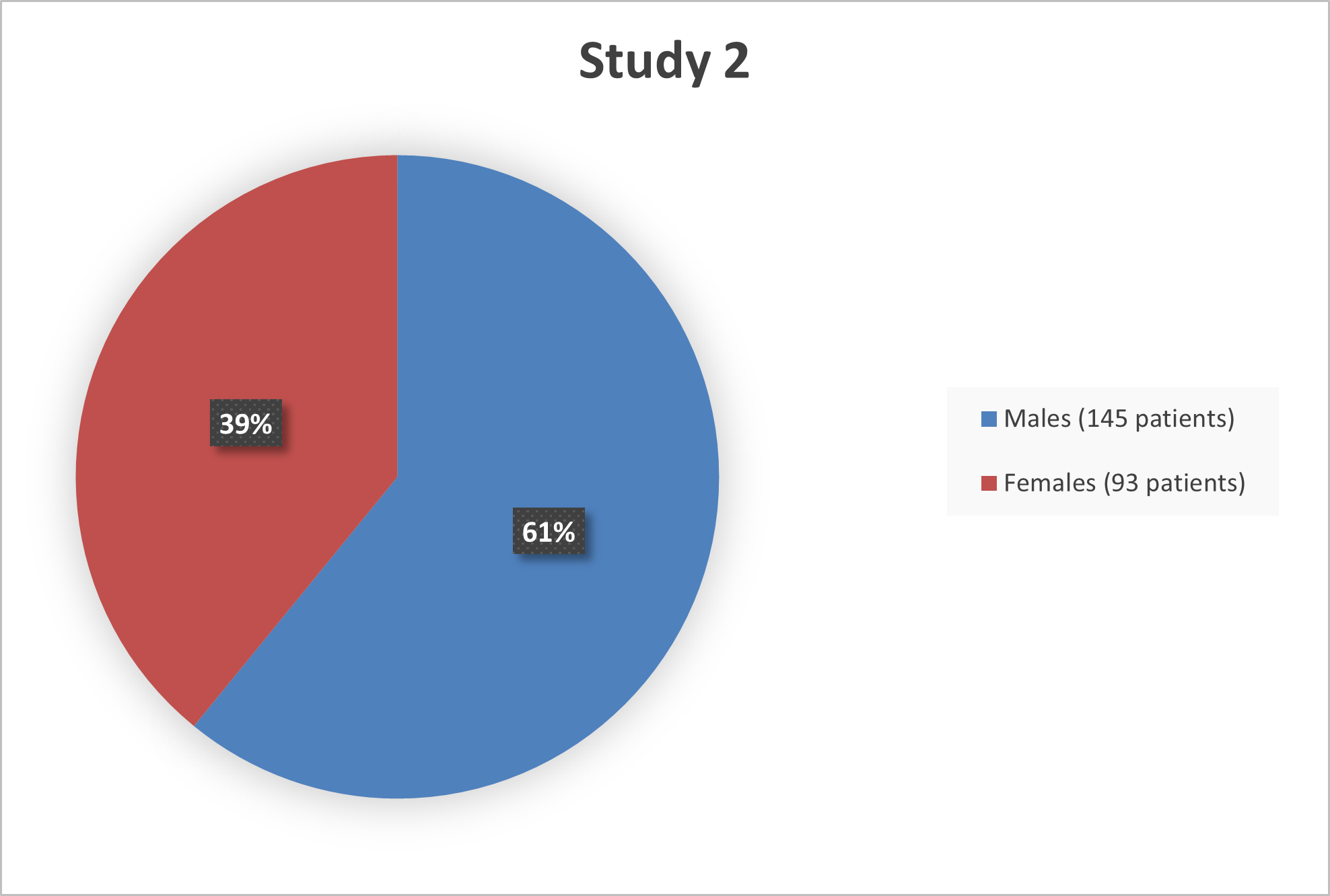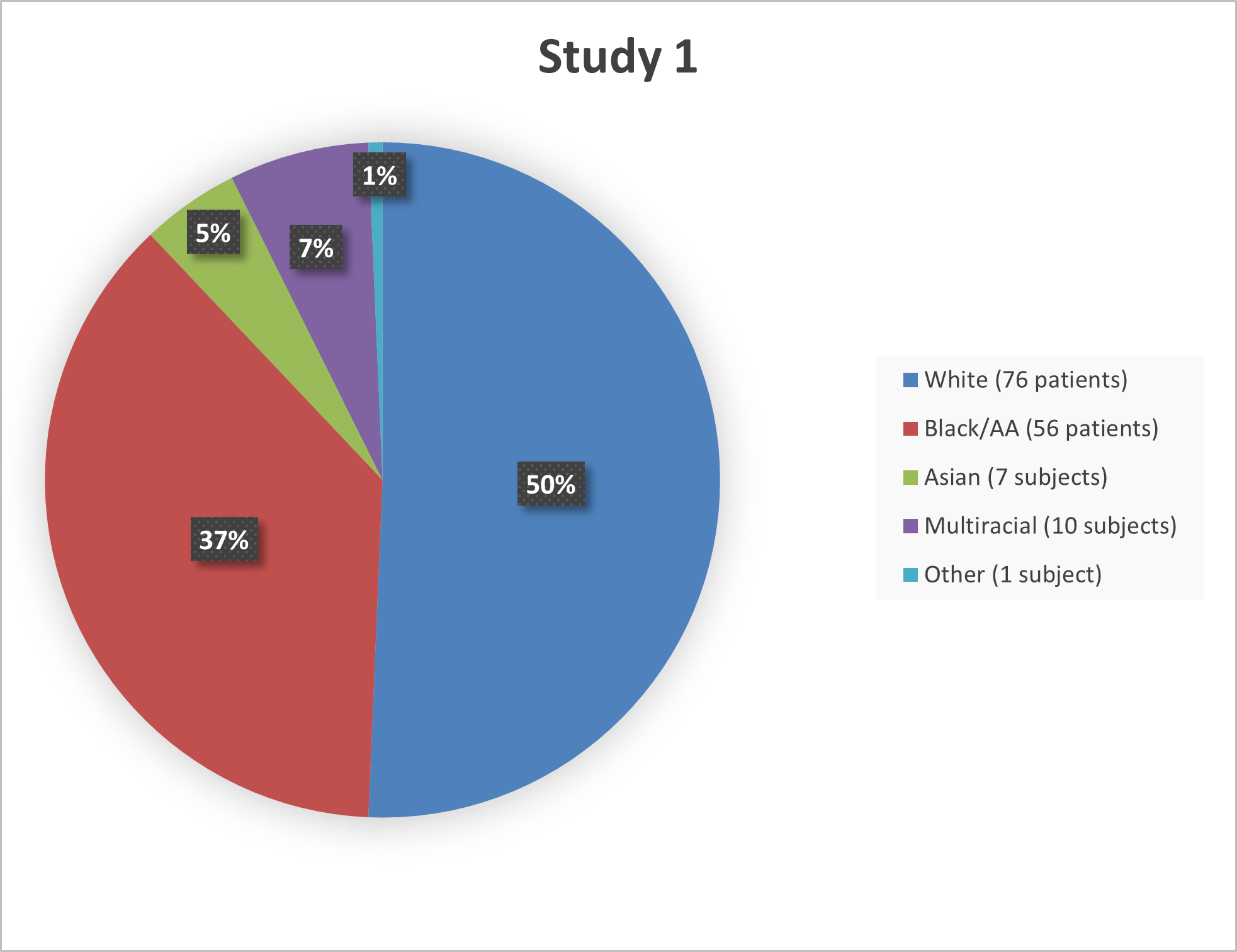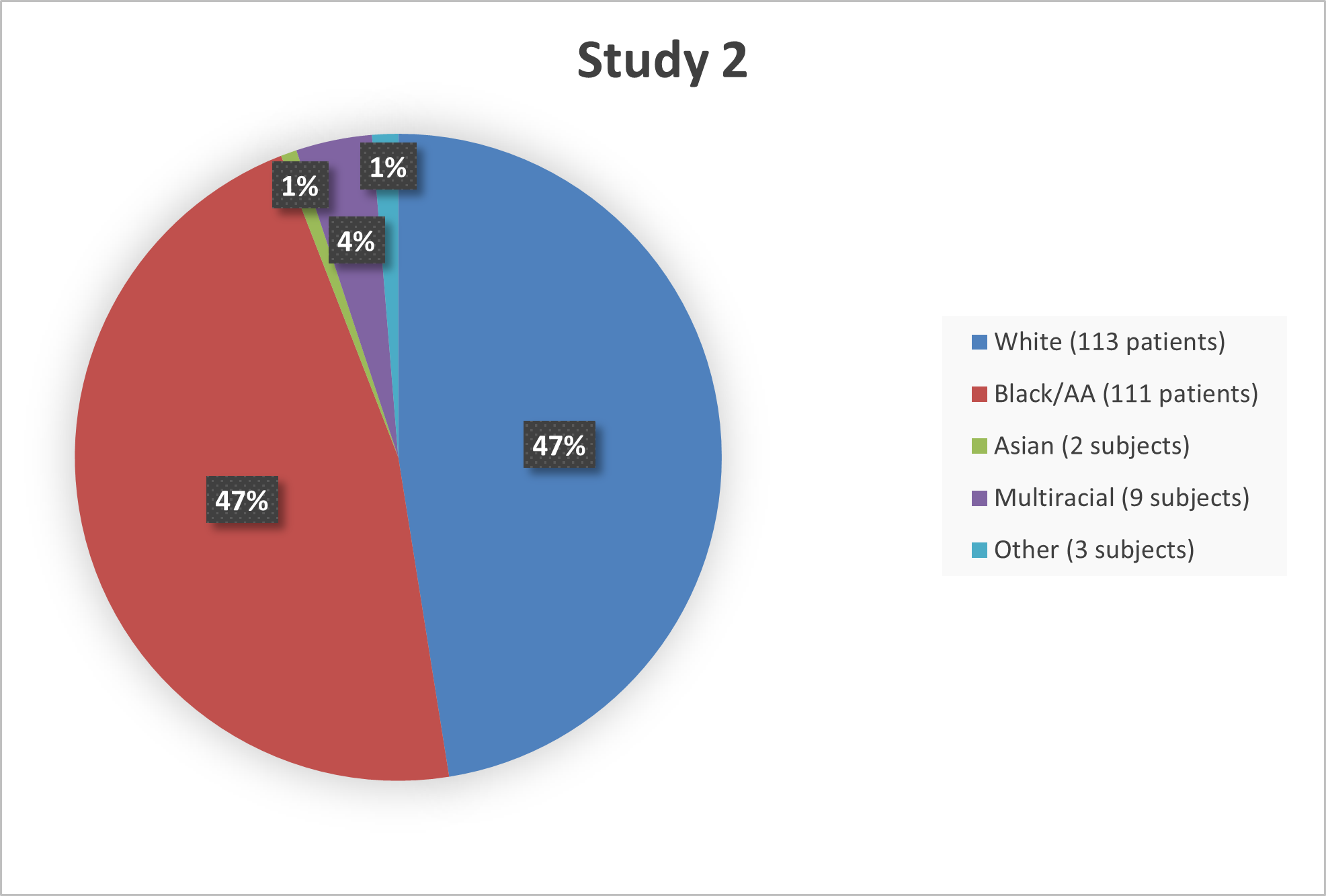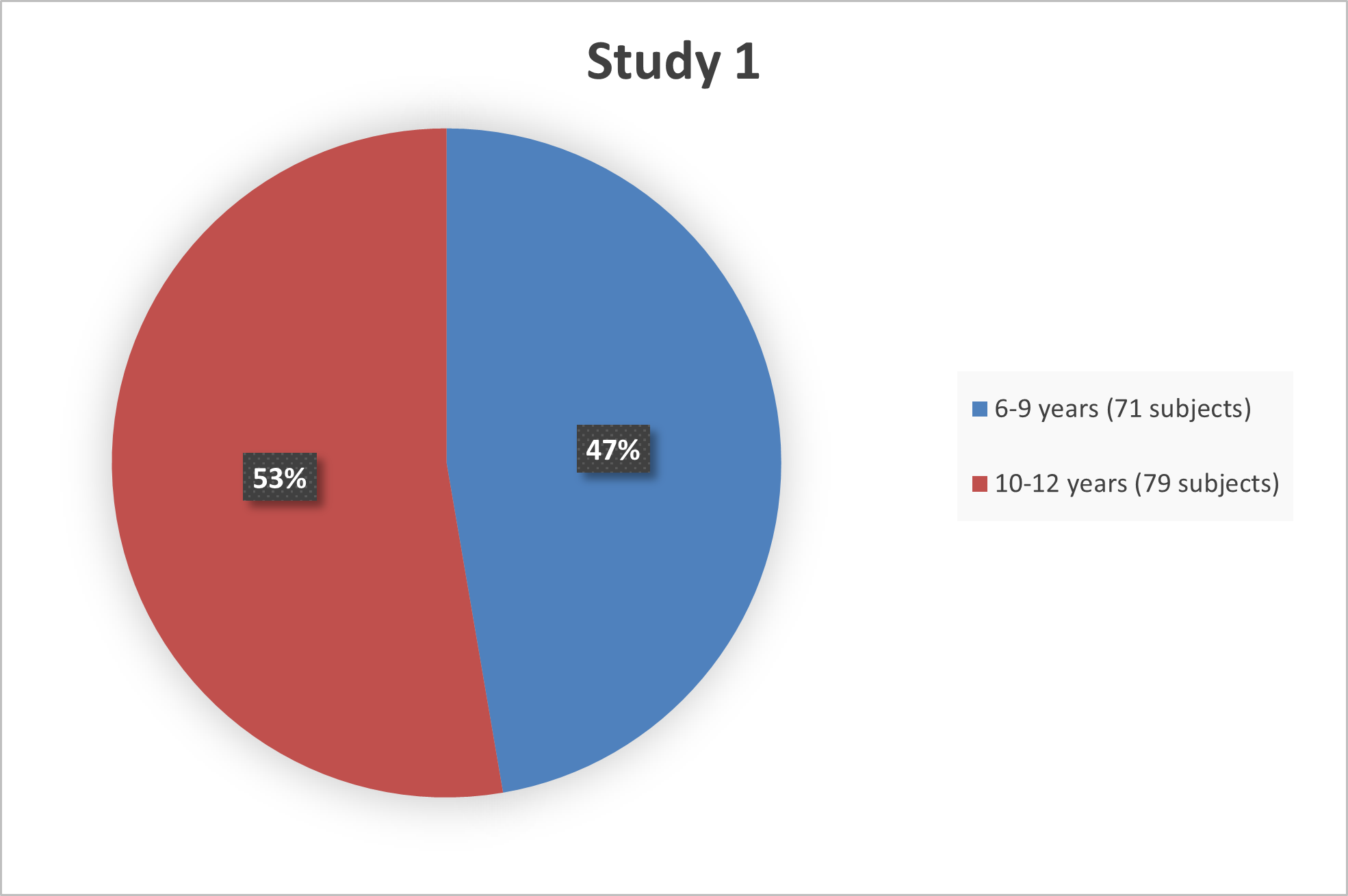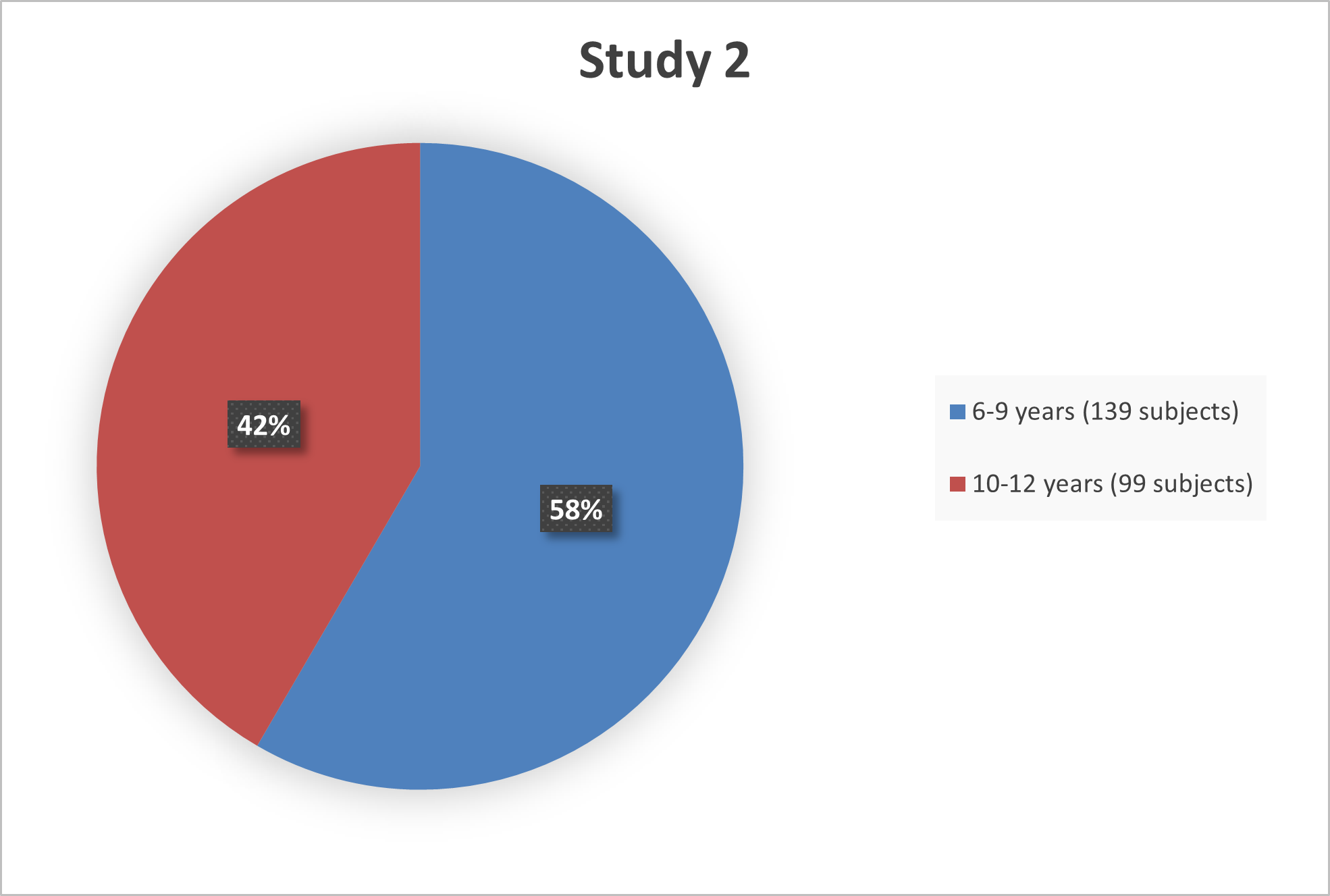Drug Trials Snapshots: AZSTARYS
HOW TO USE THIS SNAPSHOT
The information provided in Snapshots highlights who participated in the clinical trials that supported the FDA approval of this drug, and whether there were differences among sex, race and age groups. The “MORE INFO” bar shows more detailed, technical content for each section. The Snapshot is intended as one tool for consumers to use when discussing the risks and benefits of the drugs.
LIMITATIONS OF THIS SNAPSHOT
Do not rely on Snapshots to make decisions regarding medical care. Always speak to your healthcare provider about the benefits and risks of a drug.
Some of the information in this Snapshot is for presentation purposes and does not represent the approved conditions of use of this drug. Refer to the AZTARYS Prescribing Information for all of the approved conditions of use of this drug (e.g., indication(s), population(s), dosing regimen(s), safety information).
Snapshots are limited to the information available at the time of the original approval of the drug and do not provide information on who participated in clinical trials that supported later approvals for additional uses of the drug (if applicable).
AZSTARYS (serdexmethylphenidate and dexmethylphenidate)
(az star’ is)
Commave Therapeutics SA
Approval date: May 7, 2021
DRUG TRIALS SNAPSHOT SUMMARY:
What is the drug for?
AZSTARYS is a central nervous system stimulant prescription medicine used for the treatment of Attention-Deficit Hyperactivity Disorder (ADHD) in patients 6 years of age and older.
How is this drug used?
AZSTARYS is a capsule taken one time each day in the morning.
What are the benefits of this drug?
AZSTARYS increased attention and decreased impulsiveness and hyperactivity in patients 6 years of age and older with ADHD.
What are the benefits of this drug (results of trials used to assess efficacy)?
Table 1 below summarizes the primary efficacy endpoint, the mean change from baseline (pre-dose at randomization visit) of the Swanson, Kotkin, Agler, M-Flynn, and Pelham (SKAMP)-Combined scores averaged across the test day (occurring 1 week after the baseline score), with assessments conducted at 0.5, 1, 2, 4, 8, 10, 12, and 13 hours post-dose on the test day. The SKAMP rating scale is a validated 13-item teacher-rated scale that is used to evaluate the behavior and attention of the study participants during a simulated school day. The average change in the SKAMP score from baseline showed that AZSTARYS improves ADHD symptoms compared to placebo.
Table 1: Primary Efficacy Measure: SKAMP-Combined Scores Averaged Over Classroom Day (Day 28) in Pediatric Patients (6 to 12 years) with ADHD
| Study Number |
Treatment Group |
N | Mean Baseline Score* (SD) |
LS Mean Change from Baseline† (SE) |
Placebo-subtracted Difference‡ (95% CI) |
|---|---|---|---|---|---|
| Study 1 | AZSTARYS (26.1 /5.2, 39.2/7.8, 52.3/10.4 mg/day) |
74 | 17.9 (9.2) | -4.87 (0.62) | -5.4 (-7.1, -3.7) |
| Placebo | 76 | 17.9 (10.4) | 0.54 (0.70) |
Source: AZSTARYS Prescribing Information
SD: standard deviation; SE: standard error; LS Mean: least-squares mean; CI: confidence interval.
* Baseline score assessed at pre-dose on the practice classroom day/randomization visit (Day 21) after 2 days of active drug washout and occurring 1 week prior to the test day.
† Classroom day least-squares mean change from baseline over hours 0.5. 1, 2, 4, 8, 10, 12, and 13.
‡ Difference (active drug minus placebo) in least-squares mean change from baseline.
Were there any differences in how well the drug worked in clinical trials among sex, race and age?
- Sex: AZSTARYS appeared to have a similar effect in male and female patients.
- Race: AZSTARYS appeared to have a similar effect in White and Black/African American patients.
- Age: AZSTARYS appeared to have a similar effect in patients 6 to 9 years of age and patients 10 to 12 years of age.
Were there any differences in how well the drug worked in clinical trials among sex, race, and age groups?
Table 2 summarizes the response to AZSTARYS by sex, age, and race subgroups.
Table 2: Subgroup Analysis of the Primary Efficacy Endpoint (Intent-to-Treat Population)
| Average Post-Dose Change from Day 21 Baseline in SKAMP-C Scores on Day 28 | ||||
|---|---|---|---|---|
| LS Mean Change | Difference in LS Mean Changes | |||
| AZSTARYS | Placebo | AZSTARYS minus Placebo | 95% Confidence Interval | |
| Sex | ||||
| Male (N=92) | -4.82 | 1.70 | -6.52 | -8.72, -4.31 |
| Female (N=58) | -5.15 | -0.77 | -4.38 | -6.75, -2.01 |
| Age (years) | ||||
| 6 to 9 (N=71) | -4.07 | 1.90 | -5.98 | -8.72, -3.23 |
| 10 to 12 (N=79) | -5.31 | -0.76 | -4.55 | -6.80, -2.29 |
| Race* | ||||
| White (N=76) | -3.96 | 1.67 | -5.63 | -7.80, -3.45 |
| Black/AA (N=56) | -5.06 | -0.21 | -4.85 | -7.99, -1.70 |
Source: FDA Review
LS – least square
AA – African American
*Analyses not performed in 18 patients identified as Asian (7), Multiple (10) or Other (1)
What are the possible side effects?
Side effects of AZSTARYS are similar to other methylphenidate products and include decreased appetite, nausea, indigestion, weight loss, dizziness, mood swings, increased blood pressure, trouble sleeping, vomiting, stomach pain, anxiety, irritability, and increased heart rate. As with other drugs that stimulate the central nervous system, there is a high potential for dependence and abuse of AZSTARYS.
Additional side effects include serious cardiovascular reactions, priapism, peripheral vasculopathy, and long-term growth suppression.
What are the possible side effects (results of trials used to assess safety)?
Table 3 provides side effect data during a 3-week, open-label, dose-optimization phase of the AZSTARYS efficacy trial.
Table 3: Treatment-Emergent Adverse Events Occurring in ≥5% of Subjects in the 3-Week Open-Label, Dose-Optimization Phase of the Efficacy Trial (Overall Safety Population)
| Open-Label, Dose-Optimization Phase | |
|---|---|
| AZSTARYS N=155 n (%) |
|
| Decreased appetite | 38 (24.5%) |
| Insomnia | 24 (15.5%) |
| Affect lability | 18 (11.6%) |
| Abdominal pain upper | 15 (9.7%) |
| Irritability | 12 (7.7%) |
| Headache | 12 (7.7%) |
Source: FDA Review
Were there any differences in side effects among sex, race and age?
- Sex: There was no evidence for meaningful differences in the type or frequency of side effects in male and female patients.
- Race: Insomnia, affect lability, and irritability were reported more frequently in White patients compared to Black/African American patients.
- Age: Insomnia was reported more frequently in 6 to 9 year-old patients compared to 10 to 12 year-old patients.
Were there any differences in side effects of the clinical trials among sex, race, and age groups?
Table 3 provides side effect data in males vs. female patients, 6 to 9-year-old vs. 10 to 12-year-old patients, and White vs. Black/African American patients during a 3-week, open-label, dose-optimization phase of the AZSTARYS efficacy trial. Again, this data only consists of raw numerical comparisons, and the subgroup differences are not statistically compared or validated. Also, the data is not compared to placebo, as this data was from an open-label study. So it is unclear to what degree these adverse events are related to the study drug, although they appear to be common ones for this drug class.
Table 4: Treatment-Emergent Adverse Events Among Subgroups in the 3-Week Open-Label, Dose Optimization Phase of the Efficacy Trial (Overall Safety Population)
|
AZSTARYS Open-Label Dose-Optimization Phase |
||||||
|---|---|---|---|---|---|---|
| Male | Female | White | Black/AA | 6 to 9 years | 10 to 12 years | |
| Decreased appetite | 22 (23.7%) | 16 (25.8%) | 19 (23.8%) | 14 (24.6%) | 19 (25.0%) | 19 (24.1%) |
| Insomnia | 14 (15.1%) | 10 (16.1%) | 15 (18.8%) | 3 (5.3%) | 16 (21.1%) | 8 (10.1%) |
| Affect lability | 11 (11.8%) | 7 (11.3%) | 12 (15.0%) | 2 (3.5%) | 11 (14.5%) | 7 (8.9%) |
| Abdominal pain upper | 9 (9.7%) | 6 (9.7%) | 6 (7.5%) | 7 (12.3%) | 9 (11.8%) | 6 (7.6%) |
| Irritability | 7 (7.5%) | 5 (8.1%) | 9 (11.3%) | 3 (5.3%) | 7 (9.2%) | 5 (6.3%) |
| Headache | 8 (8.6%) | 4 (6.5%) | 6 (7.5%) | 5 (8.8%) | 4 (5.3%) | 8 (10.1%) |
Source: FDA Review
AA – African American
WHO WAS IN THE CLINICAL TRIALS?
Who participated in the trials?
The FDA approved AZSTARYS based on evidence from one clinical trial of 150 patients with ADHD 6 to 12 years of age (Study 1). The 4-week trial was conducted at 5 sites in the United States.
The safety and tolerability of AZSTARYS was examined in an open-label trial of 238 patients with ADHD 6 to 12 years of age (Study 2). The 12-month trial was conducted at 18 sites in the United States.
The number of patients representing efficacy findings may differ from the number of patients representing safety finding due to different pools of study participants analyzed for efficacy and safety.
Figures 1 and 2 summarize the percentage of patients by sex that were enrolled in trials used to evaluate the efficacy and safety of AZSTARYS.
Figure 1: Baseline Demographics by Sex in the 4-Week Efficacy Trial (Study 1) of AZSTARYS
Source: FDA Review
Figure 2: Baseline Demographics by Sex in the 12-Month Safety Trial (Study 2) of AZSTARYS.
Source: FDA Review
Figures 3 and 4 summarize the percentage of patients by race that were enrolled in trials used to evaluate the efficacy and safety of AZSTARYS.
Figure 3: Baseline Demographics by Race in the 4-Week Efficacy Trial (Study 1) of AZSTARYS
Source: FDA Review
Figure 4: Baseline Demographics by Race in the 12-Month Safety Trial (Study 2) of AZSTARYS
Source: FDA Review
Figures 5 and 6 summarize the percentage of patients by age that were enrolled in trials used to evaluate the efficacy and safety of AZSTARYS.
Figure 5: Baseline Demographics by Age in the 4-Week Efficacy Trial (Study 1) of AZSTARYS.
Source: FDA Review
Figure 6: Baseline Demographics by Age in the 12-Month Safety Trial (Study 2) of AZSTARYS.
Source: FDA Review
Who participated in the trials?
Table 5 summarizes the demographics of the safety and efficacy populations that participated in the Study 1 and Study 2 clinical trials.
Table 5: Baseline Demographics of the Study 1 and Study 2 participants
| Efficacy Trial (Study 1) N=150 |
Safety Trial (Study 2) N=238 |
|
|---|---|---|
| Sex | ||
| Male | 92 (61.3%) | 145 (60.9%) |
| Female | 58 (38.7%) | 93 (39.2%) |
| Race | ||
| White | 76 (50.7%) | 113 (47.5%) |
| Black/AA | 56 (37.3%) | 111 (46.6%) |
| Multiracial | 10 (6.7%) | 9 (3.8%) |
| Asian | 7 (4.7%) | 2 (0.8%) |
| Other | 1 (0.7%) | 3 (1.3%) |
| Age (years) | ||
| 6 to 9 | 71 (47.3%) | 139 (58.4%) |
| 10 to 12 | 79 (52.7%) | 99 (41.6%) |
Source: FDA Review
How were the trials designed?
AZSTARYS was evaluated in one clinical trial of 150 patients to evaluate the efficacy in treating patients with ADHD 6 to 12 years of age. The best dose of AZSTARYS for each patient was determined during an initial 3-week dose optimization period. Patients were then randomized to receive either AZSTARYS or placebo for one week. Neither the patients nor the health care providers knew which treatment was being given until after the trial was completed. At the end of this week, attention and behavior of subjects was evaluated over the course of a day in a simulated classroom setting.
AZSTARYS was also evaluated in one clinical trial of 238 patients to evaluate its long-term safety and tolerability in treating patients (6 to 12 years of age) with ADHD for up to 12 months.
How were the trials designed?
The efficacy of AZSTARYS was evaluated in a randomized, double-blind, placebo-controlled, dose-optimized, parallel group, analog classroom study in 150 patients 6 to 12 years of age. Following a 3-week Dose-Optimization period, subjects were randomized to receive either their optimized dose of AZSTARYS or placebo for one week. At the end of the 1-week treatment period, efficacy was evaluated over a period of 13 hours on the test day using the Swanson, Kotkin, Agler, M-Flynn, and Pelham (SKAMP) rating scale. The SKAMP rating scale is a validated 13-item teacher-rated scale that is used to evaluate the behavior and attention of the study participants during a simulated school day. The primary efficacy endpoint was the mean change from baseline (pre-dose at randomization visit) of the SKAMP-Combined scores averaged across the test day, with assessments conducted at 0.5, 1, 2, 4, 8, 10, 12, and 13 hours post-dose.
The safety and tolerability of AZSTARYS was evaluated in an open-label, dose-optimized, 12-month study in 238 children ages 6 to 12 years with ADHD. Safety endpoints included: treatment-emergent adverse events, physical examinations, clinical laboratory tests, electrocardiogram parameters, and vital signs.
GLOSSARY
CLINICAL TRIAL: Voluntary research studies conducted in people and designed to answer specific questions about the safety or effectiveness of drugs, vaccines, other therapies, or new ways of using existing treatments.
COMPARATOR: A previously available treatment or placebo used in clinical trials that is compared to the actual drug being tested.
EFFICACY: How well the drug achieves the desired response when it is taken as described in a controlled clinical setting, such as during a clinical trial.
PLACEBO: An inactive substance or “sugar pill” that looks the same as, and is given the same way as, an active drug or treatment being tested. The effects of the active drug or treatment are compared to the effects of the placebo.
SUBGROUP: A subset of the population studied in a clinical trial. Demographic subsets include sex, race, and age groups.
PRESCRIBING INFORMATION

